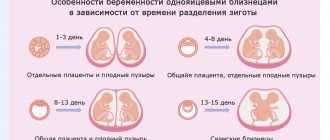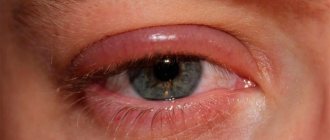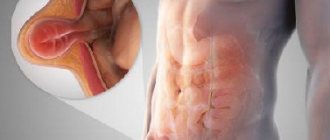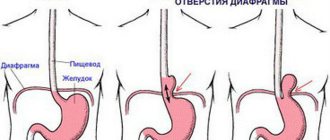Ear pain - mild or intense, shooting or aching - is a symptom that can indicate both a disease of the hearing organ and pathological processes occurring in nearby organs and tissues. According to statistics, otitis media is the most common cause of ear pain. However, the diversity of its forms and many other diseases with similar symptoms require accurate diagnosis and different treatment approaches. To establish the true causes of ear pain, it is necessary to be examined by an otolaryngologist, and sometimes by a neurologist, dentist, and even a cardiologist.
At CELT you can consult an otorhinolaryngologist.
- Initial consultation – 3,000
- Repeated consultation – 2,000
Make an appointment
Otitis externa
Most often, inflammation of the outer ear is bacterial in nature.
The causes of infection may be:
- trauma to the external auditory canal, for example, from a sharp or blunt object, or from a hearing aid;
- skin defects due to eczema, psoriasis, diabetes and other diseases;
- too thorough removal of earwax, which creates an acidic environment that prevents the growth of microbes;
- frequent entry of water into the outer ear (“swimmer’s disease”).
Symptoms of external otitis:
- acute ear pain, aggravated by pressing on the tragus or pulling the earlobe;
- possible itching and a feeling of “stuffiness” in the ear;
- discharge of a purulent or bloody nature, sometimes having an unpleasant odor;
- examination reveals swelling and hyperemia of the external auditory canal;
- possible hearing loss;
- enlargement and tenderness of the lymph nodes in the neck and behind the ear on the affected side.
The course of the disease may be complicated by a perforation of the eardrum, which cannot be determined without a visit to an ENT specialist.
External otitis of fungal origin is a common phenomenon, usually occurring in patients with low immune status or due to long-term use of antibacterial drops. It is characterized by severe itching, the formation of crusts, profuse thick discharge and the absence of a therapeutic effect from the use of antibiotics.
Separately, it is worth noting the localization of a boil on the skin of the external auditory canal or inflammation of the atheroma. The clinical picture is similar to otitis externa, but upon examination there is a more localized focus of inflammation with an opening from which pus and blood can be discharged.
Ear swelling
Ear swelling is a clinical manifestation of a specific etiology, characterized by a feeling of pain, dullness, swelling and decreased hearing. It should be noted that such a sign is not always a manifestation of an otolaryngological disease; the exact etiology and causative factor can only be determined by a doctor with the help of a medical examination and the necessary diagnostic procedures.
Treatment of ear edema at home is possible only on the recommendation of a doctor. Independent therapeutic measures can only cause harm, which will lead to complications or irreversible pathological processes.
There are no clear restrictions on age and gender; this pathological process has no basis for diagnosing both children and adults.
Etiology
The cause of swelling and swelling of the ear can be both internal and external. The first group should include the following pathological processes:
- otitis;
- zinc edema;
- inflammatory or infectious processes in the pharynx;
- acoustic neuritis;
- barotraumatic edema;
- external inflammation of the ear, which can lead to the development of birch disease or purulent otitis media;
- fungal disease;
- mastoiditis (complication of otitis media);
- atherologist;
- benign or malignant tumors of the inner or middle ear;
- or as a complication after chemotherapy;
- allergic reactions.
It should be noted external etiological factors that can also cause ear swelling:
- mechanical damage to the ear, severe physical shock;
- blows to the ear with a foreign object;
- low-quality jewelry or allergies to precious metals;
- improper hygienic procedures for cleaning the ear;
- prolonged use of headphones indoors;
- hypothermia.
Please note that the above etiological factors are typical for both adults and children.
If you have such a clinical symptom, you should seek urgent medical attention, as it can be life-threatening. For example, there is a high risk of death in the middle ear from otitis media.
Symptoms
In this case, there is no general symptomatic complex, since the nature of the symptoms depends on the underlying factor.
If the ear is swollen and swollen due to an infectious process, the following clinical symptoms may be observed:
Swelling of the middle and external ear
Swelling of the middle and outer ear is most often caused by otitis media and inflammatory diseases. The clinical picture in this case is as follows:
If treatment is not started in time, otitis may turn into pus or mastoiditis, which will lead to the development of meningitis, abscess and neuritis of the auditory nerve.
It should be noted that these diseases not only pose a local threat, but can also be fatal.
Hearing loss can occur very quickly with acoustic neuritis, and an irreversible pathological process can develop within a few hours.
If the cause of ear swelling is candidiasis or another fungal disease, the clinical picture is as follows:
- tinnitus, feeling of a full ear canal;
- hearing loss;
- cottage cheese, sometimes gray;
- the skin around the ear may become inflamed;
- constant severe itching.
- Women's breasts are most often diagnosed in the middle ear, although they can also be found in the external auditory canal or the inner ear.
- If the ear is swollen and tender inside, with a foreign body sensation, this may indicate a benign or malignant tumor.
- In case of allergies, swelling of the ear may be accompanied by the following clinical picture:
- hearing loss;
- redness of the skin, swelling of the earlobe itself;
- runny nose, tears;
- headache.
Regardless of the clinical picture, symptoms and treatment cannot be compared independently of each other, as this can lead to irreversible pathological processes. Only a doctor can tell you how to treat barotraumatic ear tumor or other etiology after diagnosis.
Diagnostics
In this case, the initial examination is carried out by an ear, nose and throat specialist. If necessary, you may also need to consult with the following specialists:
- infectious disease specialist;
- oncologist;
- surgeon.
Otoscopy
The diagnostic program includes the following actions: taking a medical record;
- taking a medical card;
- bacteriological examination of a scratch from the affected area;
- UAC and VAK if necessary;
- otoscopy;
- microscopy;
- CT or MRI of the brain.
In general, diagnostic measures are determined based on the current clinical picture and the patient's medical history taken during the initial examination.
Treatment
The course of basic therapy depends on the underlying factor. However, it should be noted that during pregnancy, medication use is kept to a minimum.
In most cases, therapy is carried out using conservative methods; if severe complications occur, surgical intervention is used.
Treatment may include the following medications:
- antibiotics;
- antimicrobials;
- antihistamines;
- non-steroidal anti-inflammatory drugs;
- analgesics.
In addition, physiotherapeutic procedures may be prescribed.
Taking into account all the recommendations of the attending physician and the timely initiation of therapeutic measures, swelling of the ears does not pose a danger to human health and life.
Prevention
The main preventive measures are the following recommendations:
- proper implementation of hygiene measures;
- wearing a hat in cold, windy weather;
- prevention of otolaryngological diseases.
If you have the clinical symptoms described above, you should consult your doctor and do not carry out treatment at your own discretion.
Is everything in this article medically correct?
Answer only if you have confirmed medical knowledge
Read to us on Yandex. Zen
Otitis media
The middle ear communicates with the nasopharynx through the Eustachian tube, through which infection can penetrate from the upper respiratory tract due to acute respiratory viral infections, influenza, sore throat, rhinitis, sinusitis and other diseases. Children are especially often affected because their Eustachian tube is short and wide, which makes it easier for infection to enter. The process can be one- or two-way.
Symptoms of acute otitis media:
- pain in the ear from moderate to severe, pulsating in nature (pain does not depend on pulling the lobe or pressing on the ear canal);
- increased body temperature;
- possible noise in the ear, dizziness, decreased hearing acuity;
- the presence of discharge (mucous, purulent, bloody) indicates a perforation of the eardrum.
With an aggressive course of the inflammatory process and the absence of adequate therapy, otitis media is fraught with such serious complications as meningitis, sepsis, intracranial abscess formation, and deafness.
Ear swelling: causes, treatment
Ear swelling is often a symptom of various pathological processes of a traumatic, allergic, infectious and inflammatory nature and is often accompanied by pain, a feeling of narrowing, and hearing loss.
If a person has ear swelling, it is recommended to see a doctor as soon as possible, as some conditions can be life-threatening. Moreover, they can be complicated by hearing loss and involvement of the brain in the pathological process. Therefore, treatment at home should be carried out only after consultation and under the supervision of a doctor.
Swelling of the ear is usually caused by injury or allergies.
What to do about swelling depends on why it developed.
Causes of ear swelling
Pathological conditions are observed in patients of different age groups. The development of edema can be explained by both endogenous and exogenous factors:
People who participate in professional sports, especially water sports, and those who are associated with an increased risk of injury are more susceptible to developing ear swelling.
Swelling can develop not only in case of injury, but also during severe stress or pressure drop (more often observed in divers and climbers). Ear swelling in a child may be the result of a ruptured eardrum (due to mechanical damage, loud noise).
Acoustic neuritis can develop not only against the background of inflammatory processes, but also when chemicals enter the ear. This pathology is dangerous due to tissue atrophy and complete hearing loss within a few hours.
In children, especially girls, the development of an infectious process associated with swelling can be caused by piercing the earlobes. For this reason, during healing it is necessary to carefully care for the urine and regularly treat the puncture site with an antiseptic solution.
The development of pathology can be facilitated by:
- some chronic diseases;
- injuries, scars;
- polyps;
- frequent granule burns.
Inflammation of the inner ear (labyrinthitis)
The labyrinth is an organ of hearing and balance, is richly innervated and includes auditory and kinetic receptors, so its inflammation causes:
- severe ear pain and headaches;
- a sharp decrease in hearing, the appearance of noise, crackling, squeaking in the ear;
- dizziness, nausea, loss of orientation in space, horizontal nystagmus.
Labyrinthitis occurs as a result of the penetration of infection in various ways from different parts and cavities of the body:
- from the middle ear with untreated or advanced otitis media;
- with infected meninges during meningitis;
- with blood for diseases such as syphilis, tuberculosis, herpes;
- damage to the temporal region, the organ of hearing with disruption of the integrity of cells and blood vessels.
The disease requires immediate medical attention.
Eustachite
Eustachitis is an inflammation of the canal connecting the middle ear to the nasopharynx. The degree of pain varies. Characteristic features are:
- feeling of stuffiness in the ear;
- noise and crackling in the ear, the patient hears his voice as too loud with a weakened perception of extraneous sounds;
- sensation of water pouring into the ear.
In the absence of timely treatment, eustachitis becomes chronic, causing chronic exudative otitis media.
Ear pain of non-infectious origin
Ear tumors
Neoplasms are most often localized in the outer and middle sections; tumors of the labyrinth are an extremely rare phenomenon. Malignant formations of the outer ear are accompanied by severe pain: the pain is burning and radiates to the temple. Possible bleeding; When the ear canal is obstructed, conductive hearing loss develops. If the middle section is affected, the symptoms are similar to otitis media; a high degree of hearing loss and intense pain, increasing in the evening, should alert you. When the process spreads, symptoms of damage to neighboring structures arise: loss of orientation in space, paresis of the facial nerve, trigeminal neuralgia.
Ear injuries
- Mechanical injuries. The auricle most often suffers with the formation of lacerations and damage to cartilage. Blunt trauma to the ear usually results in a hematoma. As a result of trauma to the ear canal, the ear hurts greatly, there is a feeling of stuffiness, and bleeding is possible. Such symptoms are an indication to consult a doctor, since rupture of the eardrum and fractures of the skull bones are possible.
- Barotrauma is caused by a difference in pressure in the external environment and the cavity of the middle ear, for example, during a sharp loud sound (explosion), take-off/landing of an airplane, deep-sea immersion (diving), climbing a mountain. As a result, the eardrum is pulled inward, which is accompanied by pain, noise or ringing, and congestion in the ears. The opposite situation is also possible, when a decrease in atmospheric pressure causes the membrane to bulge outward. As a rule, unpleasant sensations go away on their own, however, if sharp pain is noted, it makes sense to check the integrity of the tympanic membrane when examined by a doctor.
- Entry of a foreign body in the form of small objects or insects causes swelling of the skin of the ear canal, itching, pain, and sometimes hearing loss. Attempting to remove a foreign object yourself can damage the eardrum.
- With burns and frostbite of the ears, **pain // of varying intensity is observed, depending on the degree of damage.
- Conventionally, ear injuries include the formation of wax plugs, which irritate the skin of the ear canal, causing discomfort and tinnitus. Removal should be carried out by an otolaryngologist.
Swollen ear causes
Doctors often hear complaints from their patients that the inside of their ear is swollen and it hurts a lot. They examine the patient and look for the cause of the pathological process.
Swelling of the hearing organ may be caused by the following etiological factors:
- Infectious lesion. An unpleasant symptom is accompanied by diseases such as tonsillitis, laryngitis and pharyngitis. Pathogenic microflora gradually multiplies. It can spread throughout the body and enter the hearing organ through the auditory tube. In this case, the disease will cause a complication in the form of otitis, which is recognized by severe pain, hearing loss and swelling.
- Ultraviolet irradiation. During certain medical and research procedures using special equipment, damage to the hearing aid may occur.
- Allergy. Itching and swelling of the ears often indicate an acute reaction of the body to a certain irritant. Allergies can arise from food, hygiene products, cosmetics or insect bites. Against this background, the allergic person develops Quincke's edema. In case of this pathology, immediate consultation with a doctor is required.
- Getting injured. Head injuries often cause ear swelling. These injuries typically occur in athletes and young children. Mechanical damage can even occur due to improper cleaning of the hearing organ with a cotton swab.
- Foreign body. A small object or insect can easily enter the ear. Their presence in the organ of hearing is not natural. Most often, this reason explains swelling of the ear in children.
These are not the only reasons why your ear may become swollen. This symptom often appears against the background of certain painful conditions:
- Hypothermia of the body,
- Chronic diseases,
- Decreased immune system
- Hypovitaminosis and vitamin deficiency,
- Oncological tumors.
As practice shows, most often this symptom is observed in people after hypothermia or infection with an infectious pathogen.
Antibiotics for pharyngitis: how to choose the right one
Swollen ear clinical picture
Many people are sure that if the ear is swollen outside or inside, then it will definitely hurt. This is actually a misconception. Pain syndrome occurs only in acute conditions.
Therefore, it should not be considered as the main symptom of pathology. A swollen ear is often accompanied by decreased hearing quality. During a conversation, a person may experience a feeling of an echo in his head.
If the pathological process was provoked by the sudden development of an allergic reaction, the patient will notice redness of the tissue at the location of the affected organ of hearing. Symptoms such as dizziness, decreased general health and increased body temperature will also be observed.
If the ear is swollen for a long time, the person will begin to worry about the release of purulent substance from the ear canal. This phenomenon is observed after perforation of the membrane. As soon as the rupture occurs, the patient will feel a significant improvement, which will soon be replaced by a new attack of pain.
The person will have problems perceiving sounds that he could normally distinguish before the illness. The outer tissues of the organ will begin to swell greatly.
This process occurs due to the formation of a boil. Pain in the problem ear will be annoying while eating and performing other manipulations that force the jaw to move.
The pain can be observed not only in the ear. Over time, it moves to the neck, nose and throat area. This symptom is often accompanied by tinnitus and severe nausea.
Symptom treatment
To understand what to do and how to treat a swollen ear, you must first identify the factor that provoked the appearance of the painful symptom.
In such situations, medications are usually prescribed. It is also recommended to use folk remedies that reduce swelling of the hearing organ.
Drug therapy
If the ear is swollen due to an infection, the doctor will prescribe the patient to take general and local antibacterial drugs. The last treatment option is to instill special drops into the problem ear.
The following medications will help relieve this unpleasant symptom:
- Tsipromed.
- Otofa.
- Otinum.
- Otipax.
If swelling is a consequence of intoxication of the body, then non-steroidal drugs that fight inflammatory processes are used to treat the ear.
As the clinical manifestation of the disease decreases, the patient is prescribed therapeutic procedures:
- Quartzization.
- Electrophoresis.
- UHF therapy.
- Magnetotherapy.
These procedures are completely safe for humans. They are allowed to be performed even on pregnant women who have complaints of swelling of the hearing organ.
If the swelling is severe, then ear drops may not help. In this case, catheterization will be required. The procedure is carried out by inserting a special tube into the nasal cavity. Through it, the doctor instills medicine into the ear, which relieves swelling.
If your ears hurt when you have a cold, what causes it and how to treat it
The patient may be offered the option of blowing out the auditory tube. The procedure is also carried out using medical equipment. It helps normalize the pressure between the middle ear and the nasal cavity. This method is recommended in the presence of barotrauma, which led to swelling of the organ.
If swelling of the ear is caused by the body’s reaction to an allergen, the patient is prescribed hormonal or antihistamines:
- Suprastin or its analogues.
- Claritin.
- Tavegil.
Drops are instilled into the damaged organ, which carry out desensitization. It is allowed to use antiallergic ointments such as Beloderm and Advantan, which help eliminate redness of the outer tissues of the ear.
ethnoscience
Traditional medicine offers several recipes for remedies that effectively eliminate swelling and inflammation in the ear.
To recover, the patient needs to do the following:
- You need to heat regular salt in a frying pan. It should be poured hot into a clean sock and applied to the sore spot. The salt will gradually warm up the hearing organ. It will stop the development of the inflammatory process. Instead of a sock with salt, you can use a heating pad that is specifically designed to be applied to the ear.
- A fresh leaf of plantain or cabbage should be applied to the swollen organ. It must be fixed with a regular bandage and left in this form for about 2 hours. After this time, you need to replace the used sheet with a new one.
- An infusion of bay leaves will help get rid of ear swelling. To prepare it, you need to thoroughly grind the main ingredient, add boiling water and leave for an hour. The finished liquid should have a yellowish color. A cotton swab is moistened with the resulting composition and inserted into the damaged ear.
Folk recipes
An alcohol tincture based on propolis also helps eliminate painful symptoms and other signs of ear disease. It is easy to prepare at home.
To obtain a tincture, you need to pour pure alcohol into fresh raw materials. The mixture must be infused for ten days. Then vegetable oil is added to it in a ratio of 1:4. It is in this composition that you will need to moisten a cotton swab, which is then inserted into the sore ear for the whole day.
Instilling horseradish juice into the ear helps a lot. The procedure is recommended to be carried out 2 times a day. Horseradish contains useful microelements that restore impaired blood circulation and improve nutrition of damaged tissues. All this contributes to the rapid recovery of the organ.
Ear pain due to diseases of other organs
- Mastoiditis - inflammation of the mastoid process - causes intense throbbing pain in the ear, swelling of the tissue behind the auricle, hearing loss, and hyperthermia.
- With arthrosis and arthritis of the temporomandibular joint, the patient is bothered by shooting pains in the ear, which intensify when chewing, a crunching sound in the temple area, and over time, hearing impairment and malocclusion are possible.
- Mumps is an inflammation of the salivary gland located in front of the auricle, accompanied by acute pain in the ear, aggravated by swallowing and chewing, and swelling of the tissues.
- Inflammation of the parotid lymph nodes (lymphadenitis) develops when infection penetrates into them from diseased teeth or from other foci of inflammation.
- Inflammatory diseases of the nasopharynx and sinuses, malignant processes in the larynx and oral cavity are often accompanied by pain in the ear when swallowing.
- Caries, pulpitis. Since the organ of hearing, like the teeth, is innervated by the branches of the trigeminal nerve, damage to the teeth and jaw may be accompanied by pain in the ear area.
- An atypical form of heart attack, when the patient’s only subjective complaint is pain in the ear.
The inside of the ear is swollen and it hurts, how to treat it?
It is difficult for any doctor to tell what to do for ear pain or swelling without specifying the diagnosis. These pains are just symptoms, but the cause needs to be found out, diagnosed and treated by an ear, nose and throat doctor.
Diseases in the ear that may be accompanied by swelling:
- Otitis Media.
- Allergy, Quincke's swelling.
- Perichondritis.
- Otema.
- Barotraumatic edema.
- Inflammation of roses.
Ear tumors and inflammation can be caused by external otitis (rarely medial, internal). Symptoms of perichiondritis include pain and swelling on the outside of the ear. In the case of otoma, the tip of the pinna in front of the ear turns blue-cherry.
Inflammation of the rose is manifested by peeling, wounds appear covered with a thin crust. The resulting barotrauma can lead not only to swelling, but also to peeling and redness.
The main task of the doctor is to determine the type of inflammation in the patient and the resulting tumor, find the difference between bacterial causes and allergic or mechanical ones, and then make a diagnosis and choose an effective treatment method.
Allergic angioedema
The tumor can also cause an allergic reaction. It can be caused by irritants such as foods, medications and cosmetics, pollen and toxic insect bites.
Allergy sufferers often develop edema, including flinching, which manifests itself as swelling of all or part of the face.
In most cases, people go to the doctor because of an illness that is associated with taking various medications, such as enalapril, laptop.
There are different types of angioedema:
- Hereditary type - occurs once in 150,000 cases. Signs of the disease can even appear in children between the ages of seven and fifteen years. Patients develop diseases in which the body produces more antibodies, and if even mom or dad gets sick, the child’s risk of illness increases to 50 percent.
- type of purchase, which is very rare (over the past 10 years there have been only 50 cases). It occurs in adults over 50 years of age.
- The type of drug is more common, approximately 1 time per 1000 people. The cause of the disease is the use of drugs to treat heart and kidney failure.
- The allergic type most often manifests as urticaria, which is named because of its resemblance to the itchy pimples that quickly appear when stinging nettles are touched. Small pale pink blisters appear on the skin. They stay on the skin for 2 days.
How to remove swelling inside the ear
Treatment should primarily serve to eliminate allergies in the body: Allergy and non-allergy types are treated differently, but in both cases they do not need to be treated with adrenaline and antihistamines.
Adrenaline should be administered intramuscularly, as well as antihistamines and hormones. Medicines in the form of prednisolone and dexamethasone should be administered intravenously.
Otitis
Sudden, severe and sharp pain in the ear, leading to clear purulent or pale yellow discharge with fever (37.5 or more), indicates the acute phase of the disease.
If the pain is not severe, it seems to be itching, this indicates that the fungus is causing the disease. This infection is caused by Staphylococcus aureus or streptococci, which may indicate that the discharge does not smell very good.
How to help someone who is worried about ear pain? This indicates the presence of external otitis, which is divided into two types: limited and diffuse.
- With diffuse otitis media, visual examination reveals swelling of the duct and ear. At the same time, unpleasant itching and ear pain, poisoning, headaches and fever may occur. The lymph nodes near the ear may be slightly enlarged. But a worse person will not hear what the difference is between diffuse otitis and injury or damage to the eardrum. The appearance of ear infections without proper and prompt treatment can lead to a more malignant appearance.
- A limited form of otitis manifests itself in the form of abscesses, inflammation of the sac around the hair. Symptoms such as pain are worse when talking, but do not make you hear worse or make you feel sick. In this case, patients often do not begin treatment, since the abscess opens on the sixth day.
Otitis media caused by bacteria should be treated with antibiotics and antibacterial drops. At home, only calcium gluconate can be used to treat swelling due to allergies: 1 tablet before meals 3 times a day.
Barotraumatic edema
Barotraumatic edema can occur in the ear as a result of increased environmental pressure, immersion in water, and air travel. The flexibility of the eardrum changes with age and there is a risk of barotrauma.
Diagnostics
The diagnosis and treatment of pathologies associated with this symptom is carried out by an ENT doctor (otorhinolaryngologist) or an audiologist (a narrower specialty in otorhinolaryngology). During the appointment, the specialist talks with the patient, examines him, conducts the necessary examination, and establishes a diagnosis.
The multidisciplinary CELT clinic employs experienced, highly qualified otolaryngologists. Rich clinical experience helps them make the correct diagnosis in the most difficult cases.
Clinical picture
The main symptom of this disease is pain, which quite often precedes reactive infiltration of the skin of the outer ear. The swelling quickly spreads to the entire surface of the ear. The exception is the lobe, because it lacks cartilage. Initially, the swelling has an uneven, even rather lumpy surface. Exudate then forms between the cartilage and the perichondrium. If the patient does not receive urgent (emergency) help, and the pus is not evacuated (removed), the cartilage will melt and turn into a bag of pus, and the process will develop into chondritis (inflammation).
Friends! Timely and correct treatment will ensure you a speedy recovery!
Treatment
Treatment of inflammatory ear diseases includes:
- antibacterial, antiviral agents of local and general action;
- antipyretics, analgesics;
- physiotherapy;
- in some cases - surgical intervention.
Treatment must be based on accurate diagnosis, which is impossible outside a specialized clinic. The high professionalism of CELT specialists allows us to identify various diseases of the hearing organ and choose the most effective means of solving the problem.
Make an appointment through the application or by calling +7 +7 We work every day:
- Monday—Friday: 8.00—20.00
- Saturday: 8.00–18.00
- Sunday is a day off
The nearest metro and MCC stations to the clinic:
- Highway of Enthusiasts or Perovo
- Partisan
- Enthusiast Highway
Driving directions
How is barotrauma treated?
If, despite bleeding from the ear, there are no obvious tears or tears, the doctor will recommend physical therapy and further monitoring. Is the integrity of the eardrum compromised? It is important to prevent the development of infectious diseases - average or chronic purulent otitis.
Most often, it is enough to clean the ear, apply a sterile bandage and carry out symptomatic therapy - antibiotics, painkillers. Sometimes a special substance is applied to the membrane, which accelerates its regeneration. If the damage is large-scale, independent healing is impossible. To avoid the need for children's hearing aids in the future, surgical intervention is necessary.
In most cases, mechanical ear injuries do not pose a threat to the health of children. When parents act correctly, they have no consequences. If the young patient is not provided with timely assistance, severe complications may develop over time, including hearing loss. Protect your child from injury and be vigilant: when it comes to health, it is better to be overly attentive than underlooked.










